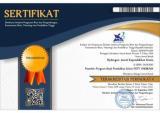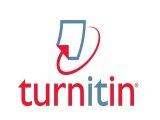Application of Digital Literacy to Chemistry Learning Outcomes of High School Students
DOI:
https://doi.org/10.33394/hjkk.v12i1.10864Keywords:
digital literacy, learning outcomes, high school chemistryAbstract
This research examines the impact of implementing digital literacy on chemistry learning for Muhammadiyah High School students in Jayapura City. In today's digital era, technology plays an important role in education, and digital literacy is an increasingly relevant skill. The data collection technique in this research was carried out using test techniques. The research results show that the use of digital technology in chemistry learning also contributes positively to student learning outcomes. This can be seen in the posttest scores obtained by the average student score of 67.86 in the experimental group and 77.68 in the control group. These findings provide empirical support for the importance of digital literacy in modern education.
References
Abdelraheem, A. Y., & Ahmed, A. M. (2018). The impact of using mobile social network applications on students’ social-life. International Journal of Instruction, 11(2), 1–14. https://doi.org/10.12973/iji.2018.1121a
Awaliyah, A. N. (2019). Literasi Digital Untuk Meningkatkan Hasil Belajar Siswa Pada Pembelajaran Seni Budaya Kelas VIII SMPN 27 Makassar. Journal of Chemical Information and Modeling, 53(9), 1689–1699.
Cordell, R. M. (2013). Information literacy and digital literacy: Competing or complementary? Communications in Information Literacy, 7(2), 177–183. https://doi.org/10.15760/comminfolit.2013.7.2.150
darussalam adhis. (2021). Jurnal Ilmiah Wahana Pendidikan. Jurnal Ilmiah Wahana Pendidikan Https://Jurnal.Unibrah.Ac.Id/Index.Php/JIWP, 7(1), 391–402. https://doi.org/10.5281/zenodo.5915263
Firman, F., & Rahayu, S. (2020). Pembelajaran Online di Tengah Pandemi Covid-19. Indonesian Journal of Educational Science (IJES), 2(2), 81–89. https://doi.org/10.31605/ijes.v2i2.659
Kaeophanuek, S., Jaitip, N.-S., & Nilsook, P. (2018). How to Enhance Digital Literacy Skills among Information Sciences Students. International Journal of Information and Education Technology, 8(4), 292–297. https://doi.org/10.18178/ijiet.2018.8.4.1050
Khery, Y., & Raodyatun, R. (2014). Respon dan Aktivitas Siswa dan Guru Pada Penerapan Perangkat Pembelajaran Asam Basa Dengan Pendekatan Somatis Auditori Visual Intelektual (SAVI). Hydrogen: Jurnal Kependidikan Kimia, 2(1), 161. https://doi.org/10.33394/hjkk.v2i1.644
Liu, Z. J., Tretyakova, N., Fedorov, V., & Kharakhordina, M. (2020). Digital literacy and digital didactics as the basis for new learning models development. International Journal of Emerging Technologies in Learning, 15(14), 4–18. https://doi.org/10.3991/ijet.v15i14.14669
Nurhamidah, N., Amida, N., & Elvia, R. (2022). Model Pembelajaran Discovery Berbasis Blended Learning untuk Meningkatkan Aktivitas dan Hasil Belajar Kimia Mahasiswa. Hydrogen: Jurnal Kependidikan Kimia, 10(1), 1. https://doi.org/10.33394/hjkk.v10i1.4884
Sianipar, V. D., Erlina, E., Lestari, I., & ... (2023). Profil Kemampuan Literasi Digital Pada Mahasiswa Pendidikan Kimia FKIP Untan Sebagai Calon Guru. Hydrogen: Jurnal …, 11(August). https://e-journal.undikma.ac.id/index.php/hydrogen/article/view/8067%0Ahttps://e-journal.undikma.ac.id/index.php/hydrogen/article/download/8067/4832
Sugiyono. (2013). Metode Penelitian Kuantitatif, Kualitatif dan R&D.
Bandung: Alfabeta.CV.
Downloads
Additional Files
Published
How to Cite
Issue
Section
Citation Check
License
License and Publishing Agreement
In submitting the manuscript to the journal, the authors certify that:
- They are authorized by their co-authors to enter into these arrangements.
- The work described has not been formally published before, except in the form of an abstract or as part of a published lecture, review, thesis, or overlay journal.
- That it is not under consideration for publication elsewhere,
- That its publication has been approved by all the author(s) and by the responsible authorities – tacitly or explicitly – of the institutes where the work has been carried out.
- They secure the right to reproduce any material that has already been published or copyrighted elsewhere.
- They agree to the following license and publishing agreement.
Copyright
Authors who publish with Hydrogen: Jurnal Kependidikan Kimia agree to the following terms:
- Authors retain copyright and grant the journal right of first publication with the work simultaneously licensed under a Creative Commons Attribution License (CC BY-SA 4.0) that allows others to share the work with an acknowledgment of the work's authorship and initial publication in this journal.Â
- Authors are able to enter into separate, additional contractual arrangements for the non-exclusive distribution of the journal's published version of the work (e.g., post it to an institutional repository or publish it in a book), with an acknowledgment of its initial publication in this journal.
- Authors are permitted and encouraged to post their work online (e.g., in institutional repositories or on their website) prior to and during the submission process, as it can lead to productive exchanges, as well as earlier and greater citation of published work.
Licensing for Data Publication
Hydrogen: Jurnal Kependidikan Kimia uses a variety of waivers and licenses, that are specifically designed for and appropriate for the treatment of data: Open Data Commons Attribution License, http://www.opendatacommons.org/licenses/by/1.0/ (default) Other data publishing licenses may be allowed as exceptions (subject to approval by the editor on a case-by-case basis) and should be justified with a written statement from the author, which will be published with the article.










